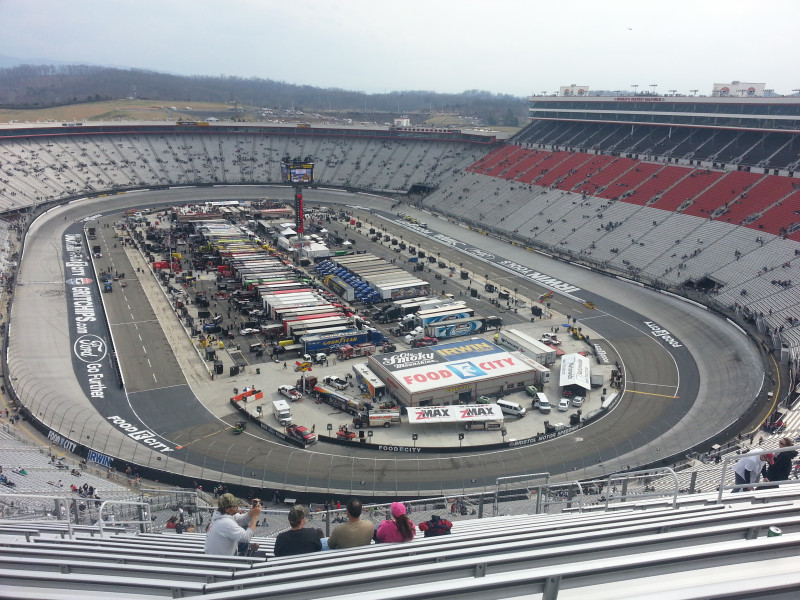Bristol Motor Speedway, located in Bristol, Tennessee, is a prominent 0.533-mile oval short track. Opened in 1961, it is renowned for hosting NASCAR races, along with other events like college football games and sprint car races. The speedway boasts a seating capacity of 146,000. In addition to the main track, the complex includes a drag strip. Bristol Motor Speedway is owned by Speedway Motorsports, LLC, with Jerry Caldwell as its general manager.
1960: Carrier Plans to Build Race Track
In 1960, Larry Carrier planned to build a race track in Piney Flats, Tennessee, but the plan was rejected by local ministers. He opted to build it on land formerly used as a dairy farm five miles south instead.
January 17, 1961: Larry Carrier Announces Intentions to Build Racetrack
On January 17, 1961, Larry Carrier announced his intentions to build a racetrack in Bristol to expand his recreational conglomerate within the Tri-Cities, Tennessee area.
July 23, 1961: Track Officially Opened
On July 23, 1961, Bristol Motor Speedway officially opened to the public for a paved half-mile speed record attempt by driver Tommy Morgan.
July 30, 1961: First Major Event: Bass Pro Shops Night Race
On July 30, 1961, the Bass Pro Shops Night Race was held as the track's first major event.
October 22, 1961: First Food City 500
On October 22, 1961, the Food City 500 was first held at Bristol Motor Speedway.
1961: NFL Exhibition Game
In 1961, Bristol Motor Speedway hosted an exhibition NFL game between the Washington Redskins and the Philadelphia Eagles, with the Redskins winning 17-10.
1961: Bristol International Speedway opening
In 1961, Bristol Motor Speedway, then known as Bristol International Speedway, opened as a 0.533-mile oval short track in Bristol, Tennessee.
October 1964: Negotiations with NHRA
In October 1964, Bristol Motor Speedway negotiated with National Hot Rod Association (NHRA) officials on building a proposed dragstrip.
1964: Plans Announced for Drag Strip
In 1964, Larry Carrier and National Hot Rod Association (NHRA) officials announced plans for a drag strip at Bristol Motor Speedway.
March 1965: Road Course Plans
In March 1965, the track announced plans to build a 2.25 miles long road course that would utilize parts of the dragstrip.
May 1965: Drag Strip Completed
In May 1965, the 1/4 mile dragstrip at Bristol Motor Speedway was completed after a hasty construction process.
1966: Road Course Construction Begins
By the beginning of 1966, the track started constructing the road course.
1968: Campaign Rally for George Wallace
In 1968, Bristol Motor Speedway hosted a campaign rally for Alabama Governor George Wallace during his presidential campaign.
1969: Track Repave and Reconfiguration
In 1969, Larry Carrier announced a repave and reconfiguration of the track, changing the banking in the turns to a progressive system from 31 to 35 degrees and the straightaways to 20 degrees.
November 2, 1977: Sale to Hester and Baker Announced
On November 2, 1977, Larry Carrier announced the sale of Bristol Motor Speedway to Lanny Hester and Gary Baker for $1 million.
1977: Sale to Baker and Hester
In 1977, Larry Carrier sold the Bristol racetrack to businessmen Gary Baker and Lanny Hester.
1978: Name change to Bristol International Raceway
In 1978, Bristol Motor Speedway was renamed Bristol International Raceway.
1978: Rebranding and First Night Race
In 1978, after the track's purchase by Hester and Baker, the track was rebranded to "Bristol International Raceway", and planned to run its first ever night race with temporary lights.
1978: Bass Pro Shops Night Race Transitions to Nighttime Format
In 1978, the Bass Pro Shops Night Race transitioned to a nighttime format at Bristol Motor Speedway.
January 1981: Baker buys out Hester
In January 1981, Gary Baker bought out Lanny Hester's share of the track.
May 1982: Baker and Hodgdon purchased the dragstrip
In May 1982, Gary Baker and Warner W. Hodgdon purchased the dragstrip from Larry Carrier.
July 1983: Hodgdon Buys Rest of Track Interest
In July 1983, Warner W. Hodgdon purchased the rest of Gary Baker's interest in Bristol Motor Speedway for $2 million, completely buying out the track.
1984: Hodgdon Faces Legal Issues
By the end of 1984, Warner W. Hodgdon faced accusations of bid rigging and his company, the National Engineering Company, faced bankruptcy.
January 1985: Track and Dragstrip Auction Scrapped
In January 1985, the Bank of Virginia planned to put Bristol Motor Speedway and the dragstrip up for auction. The auction was scrapped when Hodgdon filed for Chapter 11 bankruptcy.
November 1985: Rumors of Jim Ruth Buying Complex Denied
In November 1985, rumors of Jim Ruth buying out a portion of the Bristol Motor Speedway complex were denied by Larry Carrier.
January 1986: Carrier Confirmed Purchase
At the end of January 1986, Larry Carrier's purchase of National Raceways, Hodgdon's company that owned Bristol Motor Speedway, was officially confirmed.
1986: Carrier regains control
In 1986, Larry Carrier regained control of the Bristol Motor Speedway after Warner W. Hodgdon faced financial troubles.
September 1988: $500,000 Repave Announced
In September 1988, a $500,000 repave of Bristol Motor Speedway was announced.
May 1989: Another Repave Announced
In May 1989, Larry Carrier announced another repave of the track due to tire wear.
1989: Intention to Hold Major Concerts
In 1989, Bristol Motor Speedway sought to expand to hold major concerts.
1991: Third Repave Announced
In the fall of 1991, Larry Carrier announced a third repave of Bristol Motor Speedway.
1992: Concrete Repave Announced
After the 1992 Food City 500, Larry Carrier announced another complete repave of Bristol Motor Speedway, opting to pave the surface in concrete instead of asphalt.
January 23, 1996: Sale of Bristol International Raceway Confirmed
On January 23, 1996, the sale of Bristol International Raceway to Bruton Smith was confirmed for $26 million. Jeff Byrd, an executive from the R. J. Reynolds Tobacco Company's sports marketing division, replaced Scalf as general manager.
February 1996: Smith Denies Rumors of Moving Race Weekend and Announces Capacity Increase
In February 1996, Bruton Smith denied rumors about moving the track's spring race weekend to the new Texas Motor Speedway. He also announced plans to increase the track's capacity to 120,000 from its previous 81,000.
1996: Name change to Bristol Motor Speedway
In 1996, Bristol International Raceway was renamed Bristol Motor Speedway.
1996: Bruton Smith Buys Control of BMS
In 1996, Bruton Smith bought control of Bristol Motor Speedway, leading to major expansion of the facility.
April 1997: Bristol Motor Speedway Becomes Largest Sports Arena in Tennessee
By April 1997, Bristol Motor Speedway surpassed Neyland Stadium to become the largest sports arena in Tennessee based on capacity.
1997: $18 Million Dragstrip Renovation
In 1997, the dragstrip at Bristol Motor Speedway underwent an $18 million renovation.
1999: Construction of Kulwicki Tower
In 1999, construction began on the Kulwicki Tower at Bristol Motor Speedway, increasing the seating capacity.
2000: First Dirt Races Held
In 2000, Bristol Motor Speedway held its first dirt races on a temporary dirt surface.
2001: Dirt Races Scrapped After 2001
In 2001, the dirt races held at Bristol Motor Speedway were discontinued due to challenges with extensive cleanups.
2002: New Pedestrian Tunnel
In 2002, Bristol Motor Speedway built a new pedestrian tunnel connecting the grandstands to the infield and announced plans for further seating expansion.
2002: Temporary High School
In 2002, Bristol Motor Speedway temporarily served as a high school for students from Sullivan East High School due to a black mold infection at their school.
2006: Track Repave Announced
In 2006, the Bristol Motor Speedway announced plans to repave the track surface, which was later rescheduled for the following year.
2007: Banking Marketing Incorrect
Before 2007, Bristol Motor Speedway marketed its banking as 36 degrees; however, this was later found to be incorrect, with the true banking being 30 degrees.
2007: New Variable-Banking System Complete
In 2007, Bristol Motor Speedway completed its new variable-banking system, which varied the turns from 24 to 30 degrees and widened the racing surface to 43 feet.
2008: Criticism over Track Repave
In 2008, the track repave at Bristol Motor Speedway received criticism for altering the unique racing style the track was known for, particularly after the Sharpie 500 event.
2010: End of Sellout Streak and New General Manager
In 2010, Bristol Motor Speedway's streak of 55 consecutive sellouts for its NASCAR races came to an end. Also in October 2010, Jerry Caldwell was promoted to general manager after the death of Jeff Byrd.
2013: Battle at Bristol Announced
In 2013, the Battle at Bristol, an NCAA Division I FBS game between the Tennessee Volunteers and the Virginia Tech Hokies, was officially announced for 2016.
October 2015: Colossus TV Announced
In October 2015, Bristol Motor Speedway announced the construction of Colossus TV, a large television screen described as the world's largest outdoor, permanent, center-hung digital display.
April 2016: Colossus TV Construction Complete
In April 2016, the construction of Colossus TV was completed at Bristol Motor Speedway. In the same year, the track began applying PJ1 TrackBite to enhance traction.
2016: Battle at Bristol and NCAA Game
In 2016, Bristol Motor Speedway hosted the Battle at Bristol football game between the Tennessee Volunteers and the Virginia Tech Hokies, with the Volunteers winning 45-24. A week later, the track hosted an NCAA Division I FCS game between East Tennessee State and Western Carolina, with East Tennessee State winning 34-31.
2017: Evacuee Center for Hurricane Irma
In 2017, Bristol Motor Speedway was used as an evacuee center for people displaced by Hurricane Irma.
2018: Evacuee Center for Hurricane Florence
In 2018, Bristol Motor Speedway was used as an evacuee center for people displaced by Hurricane Florence.
2019: Evacuee Center for Hurricane Dorian
In 2019, Bristol Motor Speedway was used as an evacuee center for people displaced by Hurricane Dorian.
2020: Bristol Motor Speedway Hosts NASCAR All-Star Race
In 2020, Bristol Motor Speedway held a one-off edition of the NASCAR All-Star Race.
2020: Food City 500 Held on Dirt
In 2020, track officials announced that the Food City 500 would be run on a temporary dirt surface to address declining attendance. The truck Series also competed on dirt.
2021: Speedway Capacity in 2021
As of 2021, the speedway has a capacity of 146,000.
2021: MrBeast Tag Game
In 2021, YouTuber Jimmy Donaldson, known as MrBeast, held a tag game at Bristol Motor Speedway with a $500,000 prize for the winner.
September 2024: Fastest Race Lap Records
As of September 2024, the fastest official race lap records at Bristol Motor Speedway were listed.
2024: Facility capacity in 2024
As of 2024, Bristol Motor Speedway has a capacity of 146,000, down from its peak of 162,000. The facility also features Colossus TV, a 30-by-63 foot television screen.
August 2, 2025: Major League Baseball Game
On August 2, 2025, Bristol Motor Speedway is scheduled to host a Major League Baseball game between the Atlanta Braves and Cincinnati Reds, marking the first regular-season MLB game in Tennessee.
Mentioned in this timeline

James Stephen Jimmy Donaldson better known as MrBeast is a...
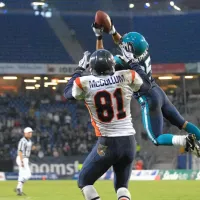
Football is a family of team sports primarily involving kicking...
Virginia officially the Commonwealth of Virginia is a state located...
The Atlanta Braves are a Major League Baseball MLB team...
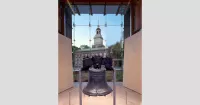
Philadelphia or Philly is Pennsylvania's most populous city and the...

The Philadelphia Eagles are a professional American football team based...
Trending
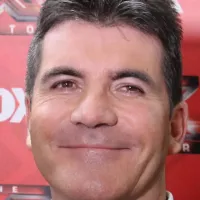
Simon Cowell is a prominent English television personality and businessman recognized for his role as a judge on various talent...

7 months ago Gary Payton Reflects on Jordan Matchup and Hypothetical Stats in Today's NBA
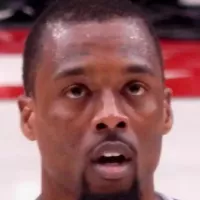
11 days ago Spurs Defeat Nuggets in Thrilling Game, Mavericks Face Nuggets

22 days ago Michael Douglas and Catherine Zeta-Jones Celebrate 25 Years of Marriage with Throwbacks
Luke Kornet is an American professional basketball player currently playing for the San Antonio Spurs in the NBA He's a...

6 months ago Jack Black's Minecraft Movie Sets Premiere on HBO Max, June 20, 2025
Popular

Candace Owens is an American conservative political commentator and author...
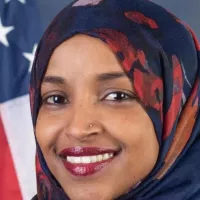
Ilhan Omar is an American politician currently serving as the...

XXXTentacion born Jahseh Dwayne Ricardo Onfroy was a controversial yet...

Tom Cotton is an American politician and Army veteran currently...
The Kennedy Center Honors are annual awards recognizing individuals and...

Kelsey Grammer is an accomplished American actor producer and singer...
